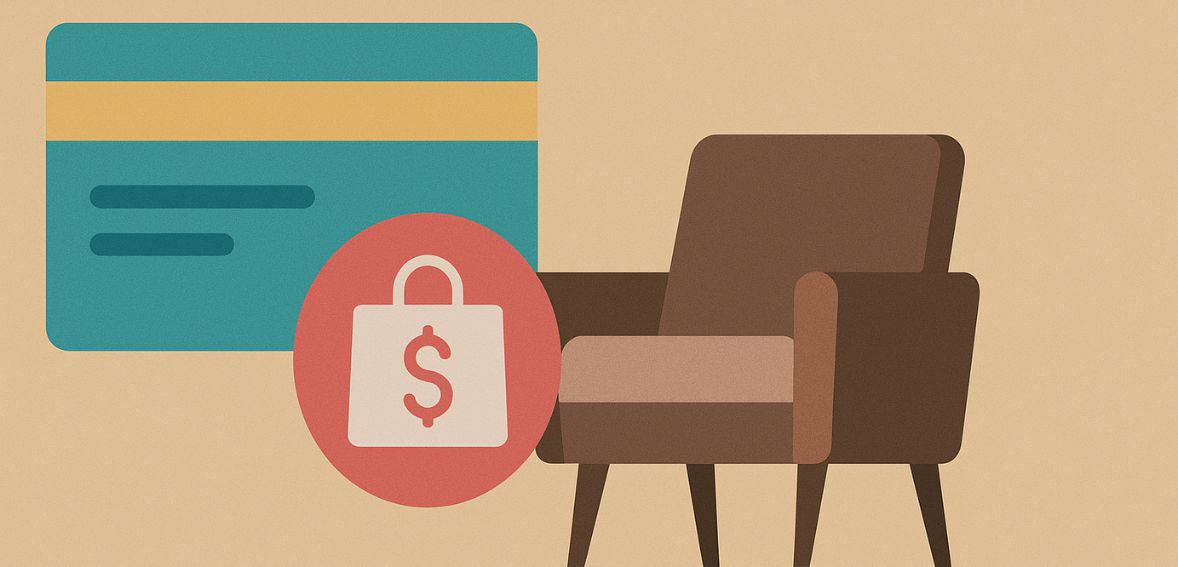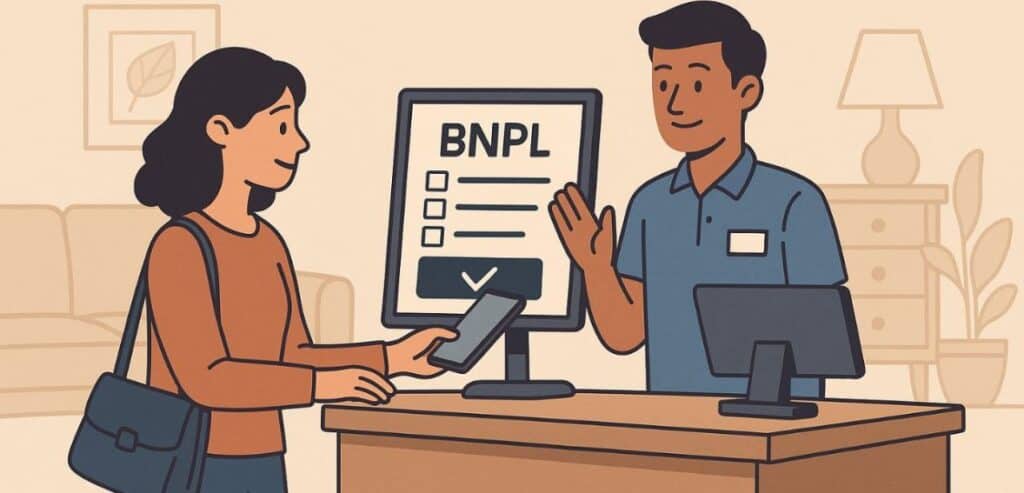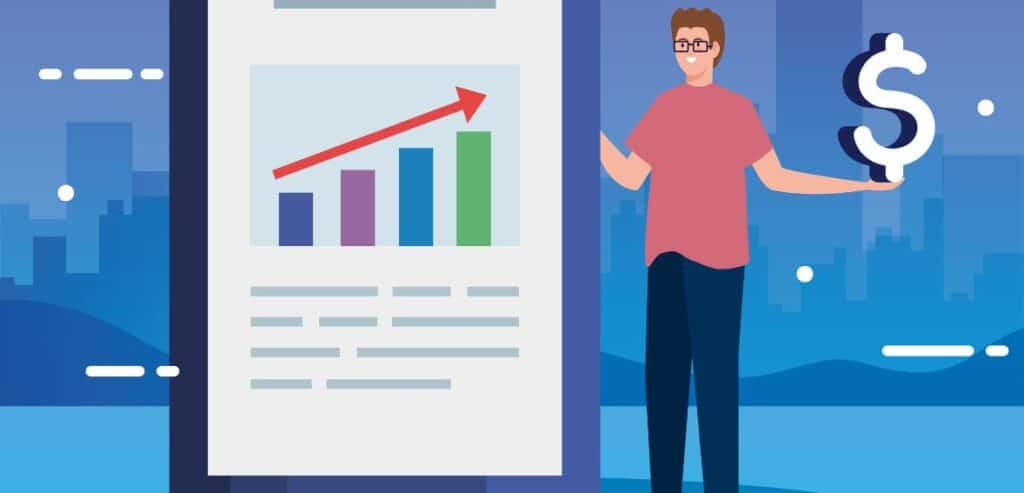
By Sarah Parker July 7, 2025
Americans’ shopping habits have changed due to the “Buy Now, Pay Later” (BNPL) phenomenon, which has spread from electronics and fashion to expensive items like furniture. Customers can purchase a sofa, dining table, or bedroom set today with BNPL and pay for it over the course of weeks or months rather than all at once. Offering BNPL can feel like opening the door to more sales, customer satisfaction, and loyalty for retailers, particularly in the furniture industry.
However, it also requires careful integration on an ethical, operational, and financial level. In order to help retailers determine whether—and how—to incorporate BNPL into their business strategy, this article explores the complexities of the practice using both human perspective and data-driven insight.
The Attraction of BNPL for Consumers

The option to divide payments into monthly installments can be a game-changer for a lot of furniture buyers. There is no denying the emotional appeal: you don’t have to spend all of your savings on that luxurious sofa or chic sectional. Rather, a modest monthly payment serves as a means of transforming a home. Because Buy Now, Pay Later eliminates the immediate financial barrier, consumers are free to select higher-quality products up front, which frequently prompts hesitant buyers to take action.
From a behavioral perspective, BNPL reflects the payment flexibility users experience on digital platforms by appealing to contemporary expectations of immediacy. It makes the experience of purchasing furniture feel more in line with other smooth everyday transactions, such as ride-sharing, streaming subscriptions, and online grocery shopping. When shopping for a living room set or an office desk, people increasingly expect similar financing convenience.
Benefits for Furniture Retailers

Furniture stores can benefit from offering BNPL in a number of ways. One of the most obvious is an increase in average order value, especially when paired with flexible furniture financing options that make high-ticket purchases more accessible and appealing to consumers. When customers see the payment plan option, they may become more hesitant but are contemplating shoppers. Furthermore, BNPL can enhance consumer perception.
Stores convey a clear message to customers by offering financing options without pressuring them to use high-interest credit cards: we respect your choice and want to help you outfit your house completely, not just sell it quickly. Building trust and a sense of partnership is more important for furniture than for fast-transaction retail because it frequently entails personal consultation and delivery coordination. Clients testing financing options, materials, or layouts could provide more referrals and repeat visits when they feel supported.
Customer Risks and Concerns
Even though BNPL appeals to a lot of consumers, retailers cannot overlook the risks involved. The potential for financial distress is the unspoken drawback for consumers. Deferred payments may appear harmless until several commitments overlap, late fees mount, or changes in lifestyle cause financial difficulties. Even though a lot of Buy Now, Pay Later providers provide interest-free installments, late payment penalties can be confusing or burdensome for customers who are not familiar with finance.
Selecting a trustworthy BNPL partner becomes crucial from the perspective of a furniture retailer’s liability. You are entrusting the customer’s credit risk underwriting and collection management to a third party. While some BNPL platforms offer shared or residual exposure, others transfer that risk completely, especially in closed-loop systems that need co-branded credit or internal financing. If underwriting isn’t strict or if customers default at higher rates, that arrangement may result in overexposure.
Cost and Revenue Implications

It’s crucial to do the math behind BNPL Implementation. As a combination of merchant fee and underwriting cost, the majority of BNPL providers take a percentage of the sale, usually ranging from 2% to 8%. Even though it might not seem like much compared to credit card fees, it adds up when you consider expensive items. Higher order values and sales volume, however, may make up for those costs.
For every two sales lost to fees, a furniture retailer may sell ten 25% more expensive sofas, effectively breaking even or even making money. Under Buy Now, Pay Later, cash flow and inventory management also change. Retailers must reconcile provider payouts and promptly fulfill orders. Accounting and reconciliation may become more difficult if payments are not made on time or if a sale is reversed. Offering BNPL also necessitates transparent pricing strategy: signage, e-commerce calculator tools, and training staff to explain installment structures become vital to preventing surprises at checkout.
Choosing the Right BNPL Partner
Not every BNPL solution is made equally. Retailers must evaluate partners based on key criteria:
- Fee schedule and contract conditions: A clear explanation of processing expenses, when payouts occur, and who is responsible for past-due accounts.
- Integration capabilities: How well the BNPL provider integrates with current accounting, delivery tracking, and point-of-sale (POS) systems.
- Experience for customers: Does the provider provide a desktop and mobile interface that facilitates digital signatures, pre-qualification, and easy repayment?
- Brand fit: While some BNPL brands cater to value consumers, others—like the Affirm platform—align more closely with lifestyle and big-ticket purchases, making them a popular option for furniture retailers targeting quality-conscious buyers.
Finding a cultural fit is just as important when selecting a BNPL partner as technology or statistics.
How to Implement BNPL in a Furniture Store
It takes a team effort to make BNPL a reality. Start with a small pilot program, maybe in one store or focusing on a unique product category like upholstery. Keep a careful eye on financial metrics and customer feedback throughout this pilot. Does the typical ticket size increase? Does the rate of cancellations or refunds increase?
Integrate BNPL into each touchpoint after it has been expanded: Product pages prominently display “$X/month with BNPL” pricing; store employees are taught to clearly explain installment options; and delivery paperwork includes payment schedule documentation. To avoid misunderstandings, make sure that every employee, including those working in the warehouse, is aware that BNPL orders are subject to the same fulfillment and return policies as ordinary purchases.
Don’t overlook the finance processes: accounting systems need to reconcile splits between provider payouts and customer actuals; commissions based on sale value should account for the merchant fee. Profitability and local customer goodwill are safeguarded by clear SOPs regarding cancellations and returns, including whether the adjustment is handled manually or through the BNPL provider.
Marketing and Communication Strategy

Effective BNPL promotion combines tone and transparency. Make use of your website, in-store posters, emails, and SMS campaigns to emphasize how financing makes home improvement easier. Talk about lifestyle instead of price. “Take home the couch today,” said the banner. In addition to payment mechanics, “Pay over 12 months” addresses convenience and desire.
Teach your staff to bring up BNPL early in the purchasing process. For example, when talking about fabric and style options, say, “You can take this home today, even if you’d rather invest monthly payments.” As a result, the option doesn’t feel like a pitch at the register. You can reset expectations and establish trust by allowing customers to explore financing early and giving them agency.
Mitigating Consumer Confusion and Risk
One of BNPL’s biggest enemies is confusion. When they see recurring charges or late fees, a consumer who misunderstands the terms may feel duped. Create unambiguous purchase agreements, email receipts for follow-up, and easily navigable repayment portals to prevent this. Provide prompt customer service for repayment inquiries, remind clients before due dates, and encourage them to set up autopay.
Retailers need to protect their brand as well. Frequent disagreements over unpaid installments damage trust and may cause customers to shop at other establishments. BNPL will remain in line with convenience rather than disappointment if repayment expectations are communicated and plain language is used.
Compliance, Privacy, and Ethical Choices

All financing—especially BNPL—involves compliance. Retailers must provide data privacy assurances, equitable offerings, and protections for customers who struggle to repay. You’ll need to comply with truth-in-lending disclosures, website accessibility standards, and privacy laws like CCPA, if applicable. Additionally, the Federal Trade Commission is paying closer attention to consumer financing practices; transparency and ethical marketing matter more than ever.
Measuring Success Over Time
BNPL should be incorporated into your long-term plan; you are not conducting a one-time test. Monitor performance on a weekly basis using metrics such as retailer margin, returns, payment-default rate, and ticket size. Are customers who use BNPL more likely to come back than those who pay in full? Do they frequently purchase more accessories or take advantage of cross-selling opportunities? Are there any trends that point to misuse? Surveys of customers are also helpful.
Gently inquire about BNPL users’ experiences: Were they well-informed? Was the repayment plan doable? Have they had trouble sending payments or receiving service? Your partner selection and internal process enhancements can benefit from this qualitative insight.
Potential Pitfalls to Watch
BNPL rollouts can go awry even with the best planning. Steer clear of these typical mistakes:
Steer clear of kitchen sink features. Unused features and sunk costs could arise from adding BNPL without updating marketing or training employees. Nobody notices a plan that isn’t carried out; it’s just a payment button. Disregarding the complexity of the backend. If not planned for, dividing deposits between provider and customer refunds can lead to accounting issues. Neglecting returns. Openness regarding the return process is crucial because BNPL refund delays quickly damage confidence.
Finance chargebacks are underestimated. Customers contesting charges, even small ones, can cause connectivity issues with providers and cause cash flow delays, though this is uncommon with installment loans. Not turning around. Reassess if, after six months, BNPL is creating friction but not increasing sales or margin. The ideal solution is adaptable enough to change as the business needs change.
Conclusion
BNPL is a component of the evolving furniture retail landscape; it is not a panacea, but when used carefully, it can be a potent tool. BNPL can increase accessibility, increase sales, and build trust if it is consistent with your brand, integrated across systems, and clearly marketed.
However, it requires attention in a number of areas, including financial tracking, customer communication, staff training, and vendor selection. When implemented properly, BNPL increases convenience without degrading value. When done poorly, it can harm customer satisfaction and profit margins. Ultimately, the question is not if BNPL should be offered—many customers anticipate it—but rather how.
Furniture retailers can turn a financing tool into an experience enhancer by focusing on implementation on customer value and business needs. When that happens, buying a new sofa becomes not a burden—but a memorable step toward creating a home.